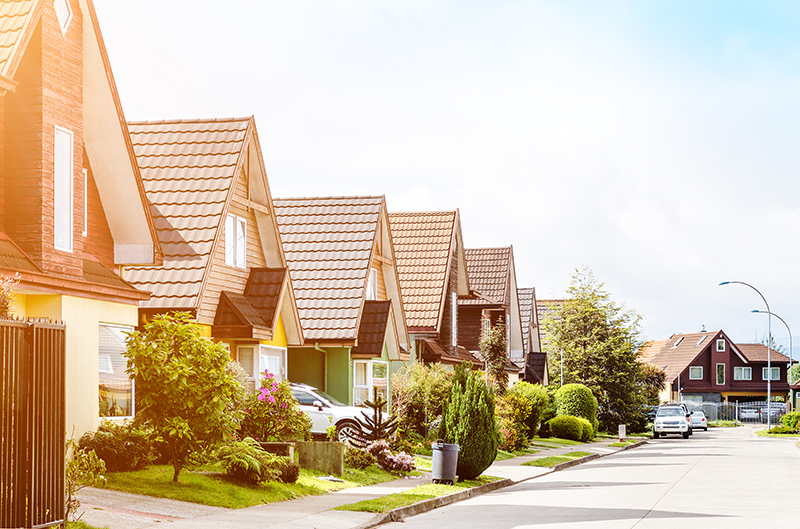As we begin 2019 and think about the changes we want in our own lives, we also should be thinking about the changes in our communities. A city is more than infrastructure and buildings, codes and taxes. A city is its residents, and the best way to retain and attract residents is to provide features that enhance the quality of life. Some areas that cities can focus on are health, security and upward mobility.
Healthy Community, Happy Community
 Improving health may feel like an uphill battle, especially after the backlash in New York against limiting supersized soft drinks. Instead of mandates, communities can promote better health by improving infrastructure that enables residents to safely walk and ride bicycles.
Improving health may feel like an uphill battle, especially after the backlash in New York against limiting supersized soft drinks. Instead of mandates, communities can promote better health by improving infrastructure that enables residents to safely walk and ride bicycles.
The National Physical Activity Plan Alliance has given the U.S. a “D” for walkable neighborhoods, although studies show residents live longer in more walkable cities with strong transit systems. A walkable neighborhood is more than sidewalks and lighting – although those are a good start – it’s about making a neighborhood an attractive hub. Urban dwellers want grocery stores within walking distance, convenient public transportation, room for cyclists and green spaces.
Pedestrian safety is an important factor in improving walkability, as one American is killed in a pedestrian accident every 1.6 hours, according to the Center for Disease Control. Improved lighting, lower speed limits and frequent, highly visible crosswalks can reduce pedestrian accidents. For example, Boston has implemented Neighborhood Slow Streets to improve safety, including low-cost measures such as reducing speed limits, speed bumps and signage.
Encouraging bike riding by adding bicycle lanes, racks and sheds can improve resident health as well as the economy. The city of Copenhagen, one of the most bicycle-friendly cities in the world, publishes a comprehensive biannual Bicycle Account. In this report, they have devised a cost-benefit analysis that includes a number of factors including transport costs, security, comfort, branding/tourism, transport times and health. The latest report calculated the net social gain at 21 cents per cycled kilometer. For purposes of comparison the net social loss per kilometer driven by car was calculated at 87 cents.
Smart Communities, Secure Communities
While legal, judicious use of cameras in public areas can reduce crime and assist in investigations, smart technology and design may go further in enhancing security.
The fear of being seen can be a strong deterrent to crime. Design elements, such as clear sight lines, wide and highly visible walkways, permeable barriers such as fences instead of walls, adequate lighting, and having windows and doors face each other are all examples of passive surveillance. Studies showed an 80 percent decrease in burglary in the Netherlands after implementing these measures.
In addition, keeping public areas clean and free of graffiti will reduce littering and petty crimes – studies show the “broken windows” theory is correct, and disorder invites more disorder for quality of life. Some cities are testing gunshot detection systems, which use triangulation to detect where a gun has been fired. In Cincinnati, police found gunshots were grossly underreported. Officers responding and interviewing witnesses after gunfire reduced such incidents by 44 percent. Experts maintain mining the resultant data for future policing efforts will reap even more rewards.
Smart devices also can help keep residents and first responders safe during fires. Most cities already require sprinkler systems and smoke and carbon monoxide detectors in commercial and public buildings, but smart devices go further. While a smart home detector sends an alert to a phone, an IoT device can communicate where a fire is and how the building systems are combatting it. IoT devices also can sense structural deficiencies before they become health hazards.
Better Opportunities, Better Community
An inability to find affordable housing and good-paying jobs can put the American Dream out of reach for many in your community’s poorest neighborhoods.
For every 100 low-income families, less than 30 affordable housing units are available. Families paying more of a third of their income toward housing are overburdened and have difficulty paying for necessities such as food and transportation – and 12 million households pay more than 50 percent of their income toward rent.
Transportation is an underreported barrier to employment, and there is a strong link between transportation and social mobility. One in five miles traveled in the U.S. is during a work commute, and disabled and low-income people struggle to meet costs while facing the unavailability of public transit or difficulty going from their home or workplace to a transit stop, a clear deterrent to quality of life.
How Can City Officials Change That?
Mixed use buildings combine services residents need, such as daycare and medical clinics, while offering retail options that make the neighborhood an attractive hub. They also provide employment opportunities. In addition to mixed-use, consider mixed-income, also known as inclusionary zoning. Developers avoid building low-income housing without government incentives because they can’t recoup their investment by charging rent low-income tenants can afford. Requiring a percentage of new construction to be set aside for low-income families lets developers earn a return on their investment while also providing affordable housing.
While the need for rental properties has increased – approximately 4.6 million more units will be needed by 2030 – affordability has decreased. City officials can encourage development and rehabilitation by eliminating parking minimums; changing building codes to make rehabilitation of older buildings easier; allowing accessory dwelling units; and funding models such as Denver’s Revolving Affordable Housing Loan Fund. Through impact fees and property taxes, the fund encourages the construction of housing for those families earning up to 60 percent of the city’s median income.
Transportation is the second largest expenditure in a household, just behind housing, and affordable transit can remove barriers to employment and reduce that expense for at-risk residents. Allowing those who fall below federal poverty guidelines to purchase discounted, flexible passes and letting small children ride free lessens the financial burden and entices more people to use the transit system. Other groups including senior citizens and those with disabilities also benefit from a strong public transportation system.
The use of smart technology and social media by transit systems is becoming more prevalent with smart phone apps and e-payments makes the experience more user friendly. Riders also want free wifi, turning their commute into more productive time.
Improving quality of life in your community won’t be simple or immediate. The many small and large changes will take time to bear fruit, but working toward that goal will result in a healthier, safer and better community.
Another way to better your community and improve private infrastructure and public health is to provide homeowners access to a program to improve their peace of mind, educate them about their responsibilities in regards to their water and sewer service lines and provide them with the opportunity to warranty those service lines. The NLC Service Line Warranty Program offers an affordable warranty program for homeowners with pre-vetted contractors and a 400-seat, 24-hour call center. Improve your residents’ happiness and quality of life by contacting us.

